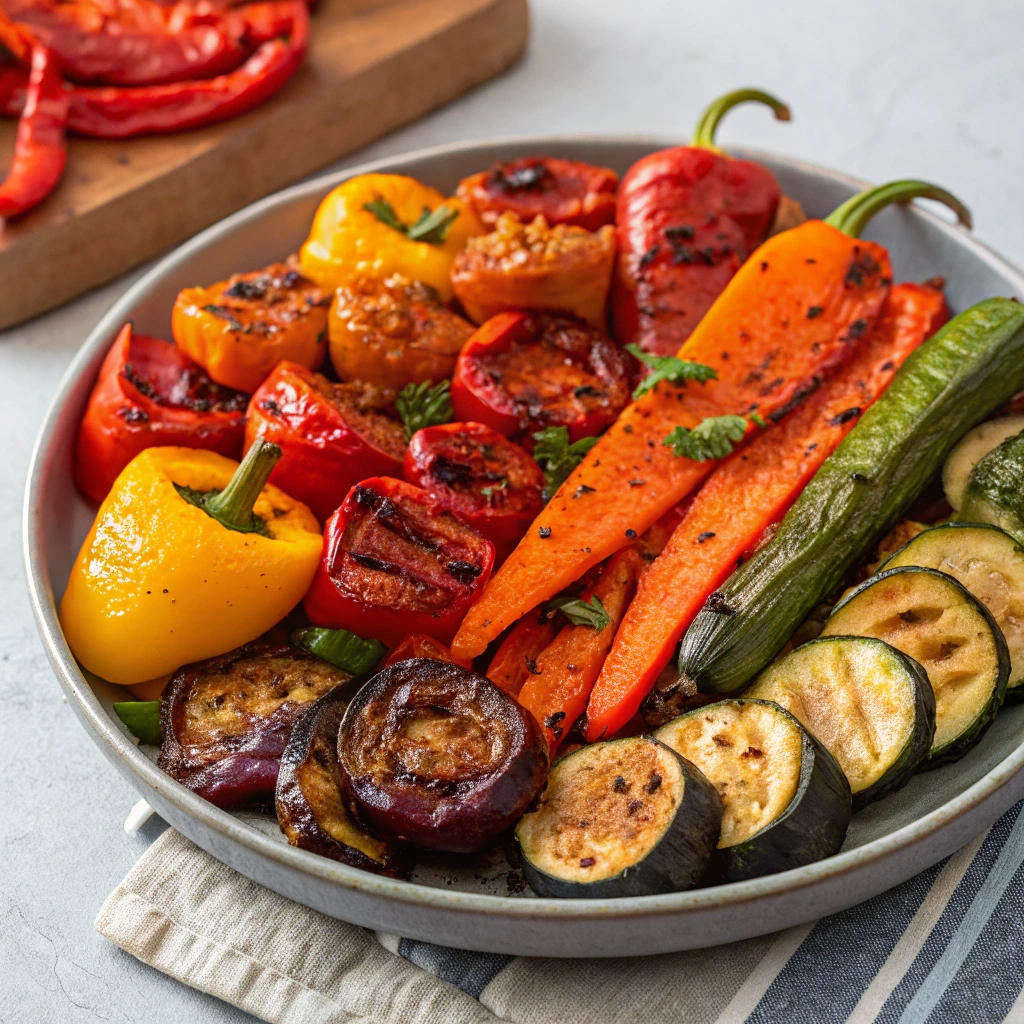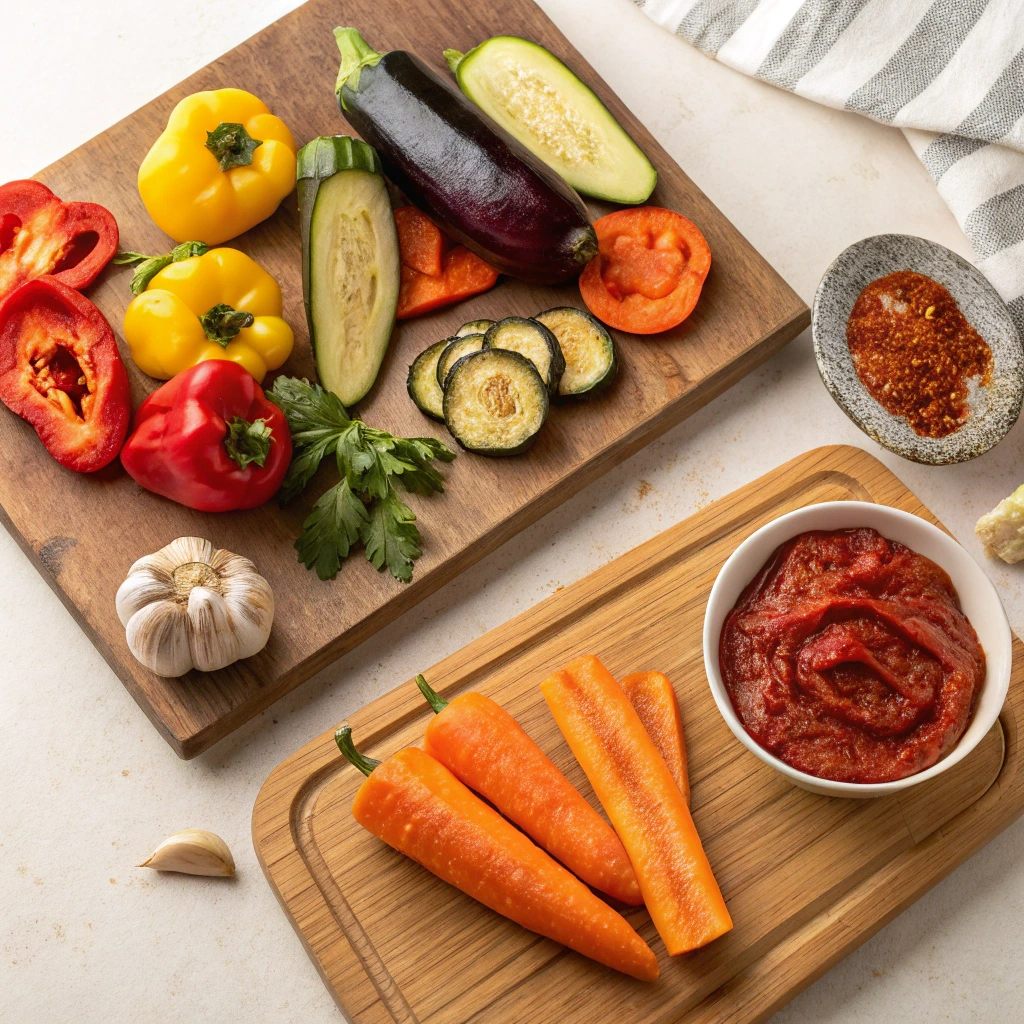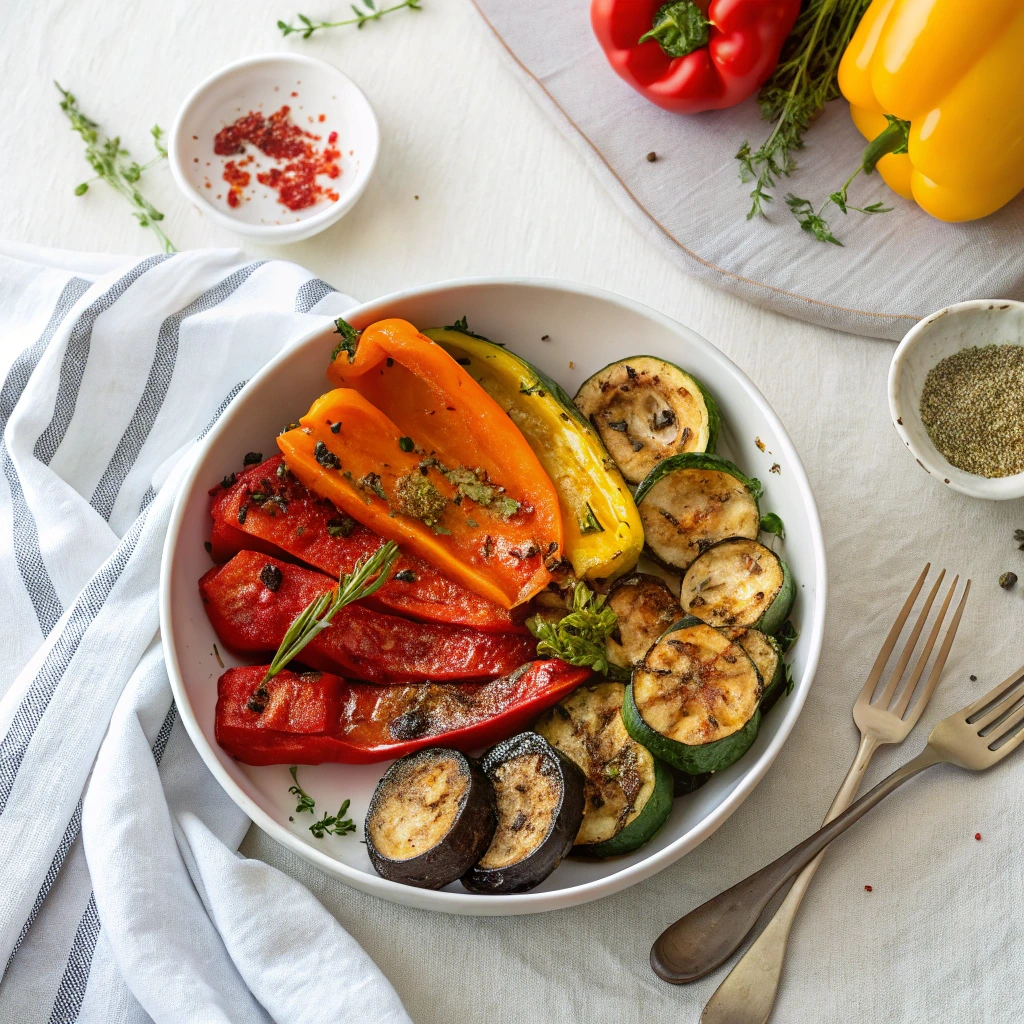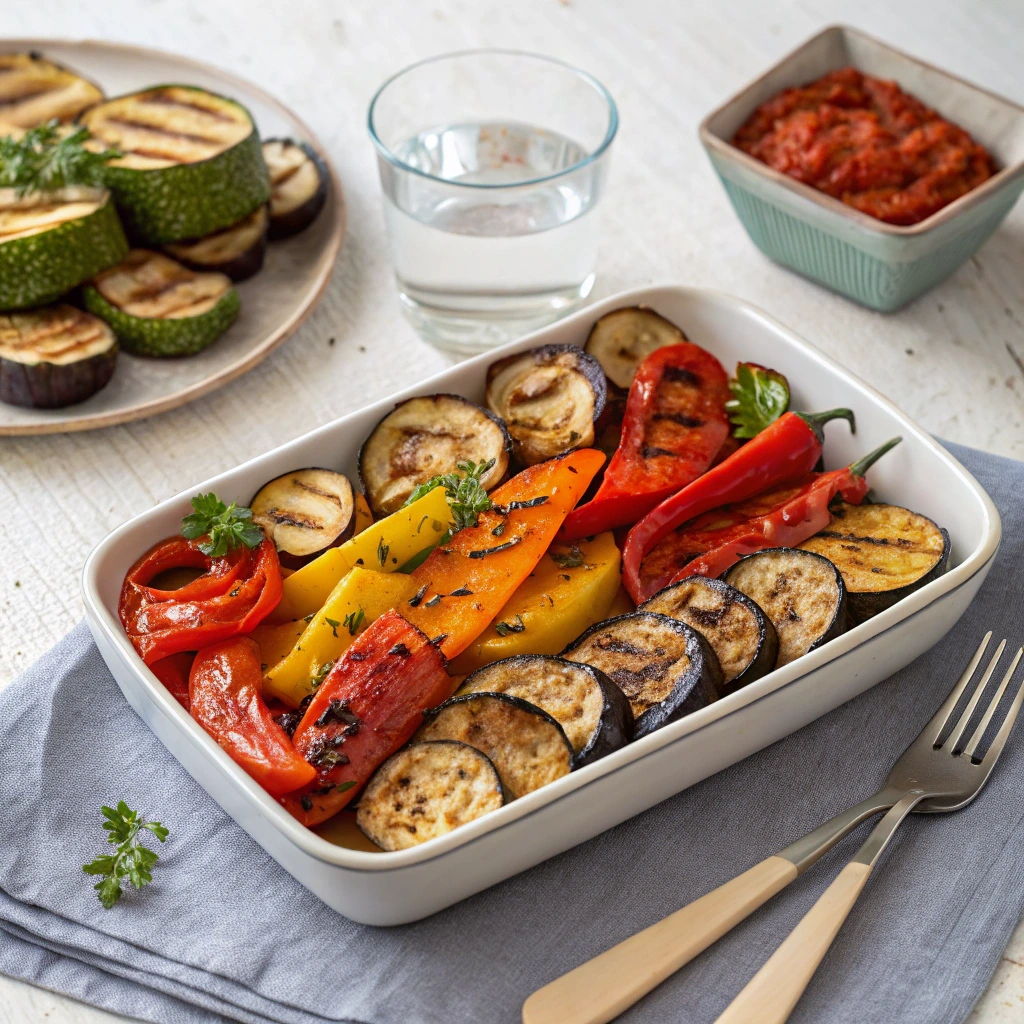Introduction

Discover the Magic of Harissa Roasted Veggie Dishes at Home
There’s something magical about stepping into your kitchen and transforming ordinary vegetables into a symphony of flavors. Imagine biting into tender, caramelized carrots or crispy sweet potatoes infused with the smoky, spicy kick of harissa. It’s not just cooking—it’s creating an experience that tantalizes your taste buds and warms your soul. I remember the first time I tried harissa roasted veggies; it was love at first bite. The depth of flavor, the perfect balance of heat, and the satisfying crunch made me realize how much potential there is in simple ingredients when paired with the right seasoning. In this article, you’ll learn step-by-step how to make flavorful harissa roasted veggie dishes at home, unlocking new levels of culinary creativity.
Why Harissa Makes Roasted Vegetables More Flavorful
Harissa isn’t just another spice blend—it’s a powerhouse of flavor. Its combination of chili peppers, garlic, spices, and olive oil creates layers of warmth and complexity that elevate any dish. Plus, roasting brings out the natural sweetness of vegetables, making them the perfect canvas for harissa’s bold personality. Not only does this recipe satisfy your palate, but it also offers numerous health benefits thanks to the antioxidants found in harissa and the nutrient-rich vegetables used.
Understanding Harissa – The Key to Flavorful Dishes
What Is Harissa?
Harissa is a North African condiment traditionally made from red chili peppers, garlic, coriander, caraway seeds, and olive oil. This fiery yet aromatic paste has been a staple in Middle Eastern and Mediterranean cuisines for centuries. Its origins trace back to Tunisia, where it remains a beloved ingredient in everyday meals.
- Key Ingredients: Red chili peppers, garlic, smoked paprika, cumin, coriander, olive oil.
- Flavor Profile: Spicy, earthy, slightly smoky with hints of citrus.
Benefits of Using Harissa in Cooking
Adding harissa to your roasted veggies doesn’t just enhance their taste—it boosts their nutritional value too. Here’s why:
- Rich in Antioxidants: Chili peppers contain capsaicin, which supports immune function and reduces inflammation.
- Heart Health: Olive oil, a primary component of harissa, promotes cardiovascular well-being.
- Digestive Aid: Garlic and spices in harissa stimulate digestion and improve gut health.
Where to Buy or How to Make Harissa Paste
You can find high-quality harissa paste at most grocery stores or specialty markets. Some popular brands include Mina Harissa and Roland Harissa. However, making your own ensures freshness and customization based on your preferred level of spiciness.
Simple Recipe for Homemade Harissa:
| Ingredients | Quantity |
|---|---|
| Dried red chili peppers | 2 tablespoons |
| Fresh garlic cloves | 4-6 cloves |
| Smoked paprika | 1 teaspoon |
| Ground cumin | 1 teaspoon |
| Ground coriander | 1 teaspoon |
| Olive oil | ¼ cup |
| Lemon juice | 1 tablespoon |
| Salt | To taste |
Blend all ingredients in a food processor until smooth. Store in an airtight container in the refrigerator for up to two weeks.

Choosing the Best Vegetables for Roasting
Top Vegetables That Pair Well with Harissa
Not all vegetables are created equal when it comes to roasting. Certain varieties hold up better under heat and absorb flavors more effectively. Below are some top picks:
- Carrots: Naturally sweet and firm, they become caramelized perfection.
- Sweet Potatoes: Their starchy texture turns golden brown and buttery.
- Cauliflower: Breaks down beautifully while maintaining its structure.
- Brussels Sprouts: Develops a nutty flavor and crispy edges.
Seasonal Vegetable Suggestions
Choosing seasonal produce ensures peak freshness and flavor. Here’s what works best:
- Winter Vegetables: Parsnips, turnips, squash.
- Summer Vegetables: Zucchini, bell peppers, eggplant.
Preparing Vegetables for Roasting
Proper preparation is key to achieving evenly cooked results:
- Cutting Techniques: Slice vegetables uniformly so they cook at the same rate.
- Peeling Tips: Remove skins from root vegetables like carrots and sweet potatoes for a cleaner finish.
- Washing Properly: Rinse thoroughly to remove dirt and debris.
Mastering the Art of Roasting Vegetables
Ideal Oven Temperature and Timing
Roasting requires precision to bring out the best in your veggies:
- Temperature: Set your oven to 400°F (200°C) for optimal browning.
- Timing: Adjust based on vegetable type:
- Carrots: 25-30 minutes
- Sweet potatoes: 35-40 minutes
- Cauliflower: 20-25 minutes
Techniques for Achieving Crispy Results
Follow these tips for perfectly crispy roasted veggies:
- Toss in Oil: Use olive oil or avocado oil to coat vegetables evenly.
- Space Out: Avoid overcrowding the baking sheet to allow air circulation.
- Flip Midway: Stir halfway through cooking to ensure even browning.
Adding Harissa for Extra Flavor
Incorporate harissa at different stages depending on your preference:
- Before Roasting: Mix harissa with oil and toss vegetables for immediate flavor infusion.
- During Roasting: Brush additional harissa halfway through for extra intensity.
- After Roasting: Drizzle over finished veggies for a finishing touch.
Creative Ways to Serve Harissa Roasted Veggies
Pairing with Grains and Proteins
Combine your harissa roasted veggies with complementary components:
- Grains: Quinoa, couscous, farro.
- Proteins: Grilled chicken, tofu, chickpeas.
Turning Them into Bowls or Wraps
Elevate your meal by incorporating these ideas:
- Veggie Bowls: Layer grains, proteins, and toppings like feta cheese or tahini sauce.
- Wraps: Stuff pita bread or tortillas with roasted veggies, hummus, and fresh herbs.
Using as a Side Dish
Make your harissa roasted veggies shine alongside main courses:
- Perfect Accompaniments: Roast chicken, lamb chops, or grilled fish.
- Scaling Recipes: Double or triple batches for larger gatherings.

Tips and Tricks for Perfect Harissa Roasted Veggie Dishes
Experimenting with Other Spices
Enhance your harissa blend with complementary seasonings:
- Cumin: Adds earthiness.
- Paprika: Provides smokiness.
- Turmeric: Offers vibrant color and anti-inflammatory properties.
Storing Leftovers Properly
Keep your roasted veggies fresh for future meals:
- Refrigeration Tips: Store in airtight containers for up to three days.
- Freezing Option: Freeze portions for longer storage.
Reheating Without Losing Texture
Revive leftovers without compromising quality:
- Oven Method: Reheat at 350°F (175°C) for 10-15 minutes.
- Pan Method: Sauté briefly in a drizzle of oil.
Customizing Heat Levels
Adjust harissa amounts according to your spice tolerance:
- Mild: Add less harissa or dilute with yogurt.
- Spicy: Increase quantity or use hotter chili varieties.
Advanced Techniques for Enhancing Your Harissa Roasted Veggie Experience
Marinating Vegetables Before Roasting
Marinating your vegetables in a harissa-based marinade before roasting can significantly enhance their flavor profile. This method allows the spices to penetrate deeper into the veggies, resulting in a more robust taste.
- Steps to Marinate:
- Whisk together harissa paste, olive oil, lemon juice, garlic, and a pinch of salt.
- Toss your prepared vegetables in the marinade until fully coated.
- Let them sit for at least 30 minutes (or up to overnight in the fridge) before roasting.
Adding Fresh Herbs for Aromatic Flair
Fresh herbs like parsley, cilantro, or mint can elevate your harissa roasted veggies with bursts of freshness. Sprinkle chopped herbs over the finished dish just before serving for an aromatic finish.
- Herb Pairings:
- Parsley: Complements earthy vegetables like carrots and sweet potatoes.
- Cilantro: Works well with spicier blends and adds a citrusy note.
- Mint: Perfect for lighter vegetables such as zucchini or bell peppers.
Incorporating Nuts and Seeds for Texture
For added crunch and nutrition, sprinkle toasted nuts or seeds over your roasted veggies. These additions not only enhance texture but also provide healthy fats and protein.
- Popular Options:
- Toasted almonds or pine nuts for cauliflower.
- Sesame seeds for carrots or Brussels sprouts.
- Crushed walnuts for sweet potatoes.
Troubleshooting Common Issues with Harissa Roasted Veggies
Even experienced cooks encounter challenges when experimenting with new recipes. Here’s how to troubleshoot common problems:
Why Are My Vegetables Not Crispy?
Crispiness depends on proper preparation and technique. Follow these tips to avoid soggy results:
- Ensure vegetables are dry before tossing in oil.
- Use enough space on the baking sheet to prevent steaming.
- Preheat your oven to ensure consistent heat distribution.
How Do I Balance Spiciness Without Losing Flavor?
If you find the heat overwhelming, try these adjustments:
- Dilute harissa with yogurt or tahini for a creamier, milder flavor.
- Start with a small amount of harissa and gradually increase based on preference.
- Balance spiciness with sweetness by adding honey or maple syrup to the marinade.
What If My Vegetables Burn Before They’re Cooked Through?
To prevent burning, adjust cooking times and temperatures:
- Cut larger pieces for slower-cooking vegetables like sweet potatoes.
- Reduce oven temperature slightly if using delicate veggies like zucchini.
- Rotate the baking sheet halfway through cooking for even browning.
Exploring International Variations of Harissa Roasted Veggies
Harissa isn’t confined to its North African roots—it has inspired countless global interpretations. Whether it’s a Middle Eastern twist or an Asian-inspired fusion, there are endless ways to enjoy harissa roasted veggies. For instance, check out this article on how different cultures use harissa in their cuisine to get more ideas for your culinary adventures. Below are some international variations to try at home:
Middle Eastern Twist
Incorporate za’atar seasoning, sumac, or pomegranate molasses for a distinctly Middle Eastern flair.
Mediterranean Fusion
Pair harissa roasted veggies with ingredients like olives, sun-dried tomatoes, or feta cheese for a Mediterranean-inspired dish.
Asian-Inspired Take
Experiment with soy sauce, ginger, or sesame oil to create an Asian twist. Serve with rice noodles or sushi rolls for an exciting fusion meal.

The Science Behind Why Harissa Roasted Veggies Taste So Good
Understanding the science behind cooking techniques can help you refine your approach. Here’s why harissa roasted veggies are so irresistible:
Maillard Reaction
The Maillard reaction occurs when amino acids and sugars in food react under high heat, creating complex flavors and golden-brown colors. This process is what gives roasted veggies their delicious caramelized exterior.
Smoky Undertones from Harissa
Smoked paprika in harissa contributes to its signature smokiness, which complements the natural sweetness of roasted vegetables. Together, they form a harmonious blend of flavors.
Health Benefits of Roasting
Roasting preserves more nutrients compared to boiling or frying. It also enhances the natural sweetness of vegetables, reducing the need for added sugars.
FAQ Section
Q: What is the best way to store leftover harissa roasted veggies?
A: Store them in an airtight container in the refrigerator for up to three days. For extended shelf life, consider freezing individual portions.
Q: Can I use harissa roasted veggies as a standalone meal?
A: Absolutely! Pair them with grains, proteins, or transform them into bowls or wraps for a complete, satisfying dish.
Q: Is harissa roasted veggie suitable for vegan diets?
A: Yes, as long as you use plant-based oils and avoid adding dairy products, harissa roasted veggies are entirely vegan-friendly.
Q: How do I make my harissa roasted veggies less spicy?
A: Reduce the amount of harissa or mix it with plain yogurt before tossing your veggies. You can also opt for milder chili varieties when making homemade harissa.
Conclusion
H1: Embrace the Art of Harissa Roasted Veggie Cooking Today!
Congratulations—you’ve now unlocked the secrets to crafting flavorful harissa roasted veggie dishes that impress both family and friends. From understanding the origins and benefits of harissa to mastering advanced techniques, this guide equips you with the tools needed to elevate your culinary skills. Remember, cooking is about creativity and personal expression. Feel free to experiment with different spices, pairings, and methods to make each dish uniquely yours.
Don’t hesitate to share your experiences, tips, and favorite recipes in the comments below. Your feedback inspires others and helps build a community of passionate home cooks. Happy roasting, and may your kitchen always be filled with the aroma of perfectly spiced vegetables!
Call-to-Action
Ready to take your harissa roasted veggies to the next level? Download our free printable recipe card featuring step-by-step instructions and ingredient lists. Share your creations on social media using #HarissaRoastedVeggie and tag us—we’d love to see what you come up with!
